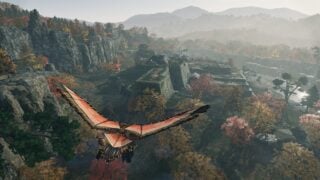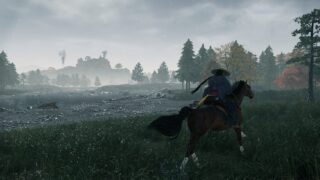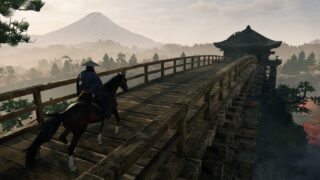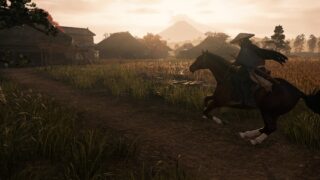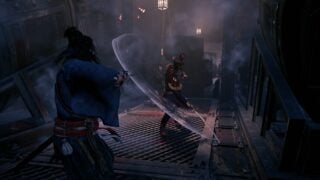So far, Rise of the Ronin feels like a lot of games we love
In its opening hours, Team Ninja’s Japan epic is a jack of all trades, but which of those it will master is yet to be seen
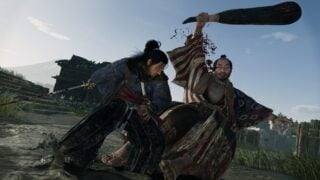
Rise of the Ronin feels like a lot of other games.
During the first few hours that we’re able to cover in this preview, we were reminded of Assassin’s Creed, Ghost of Tsushima, Nioh (we’ll let them away with that one), and, most obviously, FromSoftware’s Sekiro.
While Rise of the Ronin isn’t quite a Souls game and sails much closer to something like the aforementioned Ghost of Tsushima, it’s impossible not to be reminded of the FromSoftware classic when in combat.
Rise of the Ronin’s skirmishes are all about parrying and posture. Every character you fight will have a posture bar that’s separate from their health. Depleting this will open the enemy up to a deadly blow that will do a lot of damage, or instantly kill some lower-level enemies.
The fastest way to get rid of this posture is to accurately parry incoming attacks. Parrying normal attacks will prevent you from taking damage and reduce a small amount of the enemy’s posture.
Rise of the Ronin Video Preview
When the attack glows red and the enemy charges at you full of bloodlust, you have the option of dodging it and avoiding the potentially huge amount of damage said attack will do, or you can attempt to parry it, which more often than not instantly opens the window for a devastating blow.
Combat is fun and it’s satisfying to get into a rhythm with taking down multiple enemies, the only issue we’ve faced early on is reading what the enemy is going to do. Outside of the two colours differentiating what kind of attack is going to be used, there’s little in the way of telegraphing.
In practice, this means that even for the weakest enemies, you’ll likely have to watch them perform their attacks a few times before you get their patterns down. This is fine for huge bosses, but it really interrupts the flow of fighting mobs, and ruins the cinematic feel that the game achieves in other areas.
Like Nioh, enemies in the game can be weak or resistant to specific fighting styles, which can be easily switched between. This largely impacts how much damage those devastating blows do when you’ve whittled down the composure of an enemy. It’s deeply frustrating when you waste a deadly blow on a resistant enemy and do virtually no damage, but that’s there to teach the player to always be changing weapons and modes of attack.
Speaking of, the game has some ranged weapons, namely bows, guns, and shuriken. Guns are used more in the Bloodborne sense as a means to stun and not as a way to speedrun the game blasting away your enemy soldiers. The bow and the shuriken are fun to incorporate into a stealth playstyle, something we implemented routinely during our early hours.
Rise of the Ronin is an open-world game, spanning several different districts of Japan. The game is set in the pre-Tokyo region of Edo, the story explores factions of pro and anti-imperialist factions, set against the backdrop of colonizing Americans attempting to establish political ties in the region.
Players begin on a mission to reconnect with a lost companion, following a mission gone wrong during the game’s intro. Once let loose on the open world, you’re able to explore freely, doing small odd jobs for local people, which will gain you favor in that prefecture. There are multi-stage side quests, or there are things as simple as a roadside disturbance that can be resolved via talking, or the end of your blade.
“Combat is fun and it’s satisfying to get into a rhythm with taking down multiple enemies, the only issue we’ve faced early on is reading what the enemy is going to do. Outside of the two colours differentiating what kind of attack is going to be used, there’s little in the way of telegraphing.”
The open world feels like it has a lot to do, even if the towns themselves feel more like movie studio backlots with little of the hustle and bustle one would expect from a modern open-world game of a similar size.
Similarly, the visuals aren’t stellar. The game offers three graphical options, prioritizing frame rate, visuals, and ray tracing respectively. Being a Team Ninja game, there really should only be one option. In practice, this means sacrificing a lot of visual flair for a rock-solid frame rate.

The game is lit beautifully and there have already been several well-staged fights against beautiful, vibrant backdrops during our playtime, but when you get up close to character models or buildings, things start to look rather last-gen.
To get around you’re given a glider that can be opened at will. You’ve also got a grappling hook, which, when used in conjunction with the glider, can send you essentially flying across the busiest areas of the map.
We hope later in the game there’s some kind of upgrade that allows us to do something similar in the wooded areas around the domesticated settlements, as for now we’ve largely been relegated to horses when far from large buildings.
So far, while we’re enjoying our time with Rise of the Ronin, we’re waiting for its standout moment. Other than some dated-looking visuals, every element of the game is fine to great, nothing so far is best-in-class. There’s plenty of room for that to land, especially considering the size of the game and Team Ninja’s pedigree.






